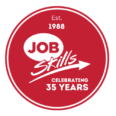
Crafting the Perfect Resume to Land Your Dream Job
In today’s competitive job market, having a standout resume is crucial. Whether you’re a recent graduate, a career changer, or a job seeker looking for new opportunities, your resume is often the first impression you make on potential employers. A professional resume can open doors to interviews and job offers, helping you advance in your career. This guide will provide you with the essential steps to craft a resume that gets noticed.
Understand the Purpose of Your Resume
Your resume’s primary goal is to secure an interview. Think of it as a marketing document that highlights your skills, experience, and qualifications to convince hiring managers that you’re the right candidate for the job. It’s not just about listing your past jobs; it’s about showcasing your value and what you can bring to a potential employer.
To achieve this, your resume must be clear, concise, and relevant. Avoid cluttering it with unnecessary details. Focus on presenting the information that matters most and that aligns with the job you’re applying for. Remember, hiring managers often spend only a few seconds scanning each resume, so make every word count.
Choose the Right Resume Format
Selecting the appropriate resume format is crucial. The format you choose should best highlight your strengths and experiences. Here are three common formats:
Chronological Resume
The chronological resume is the most common. It lists your work history in reverse chronological order, starting with your most recent job. This format is ideal if you have a steady work history and want to show career progression.
Functional Resume
The functional resume focuses on your skills and experience rather than your employment history. This format is beneficial if you have gaps in your employment or are changing careers. It allows you to highlight your abilities and accomplishments without drawing attention to periods of unemployment.
Combination Resume
A combination resume, as the name suggests, combines elements of both the chronological and functional formats. It allows you to showcase your skills and achievements while also providing a chronological work history. This format is useful if you have a diverse background and want to highlight both your skills and experience.
Start with a Strong Header
The header of your resume should include your full name and contact information. Make sure this section is easy to read and stands out.
- Full Name: Use a larger font size for your name.
- Contact Information: Include your phone number, email address, and LinkedIn profile. If you have a personal website or portfolio, consider adding it here as well.
This section should be straightforward and professional, as it provides the basic information needed to contact you.
Write a Compelling Summary or Objective
The summary or objective section of your resume provides a brief overview of your professional background and career goals.
Summary
A summary is a short paragraph that highlights your key achievements and experiences. It’s ideal if you have significant work experience and want to showcase your accomplishments.
Objective
An objective statement outlines your career goals and how you aim to contribute to the company. This is more suitable for recent graduates or career changers who may not have extensive work experience.
Both the summary and objective should be tailored to the job you’re applying for. Focus on what makes you a strong candidate and how you can add value to the potential employer.
Highlight Your Work Experience
Your work experience is one of the most critical sections of your resume. List your jobs in reverse chronological order, starting with your most recent position.
- Job Title, Company Name, Location, Dates of Employment: Include these details for each job.
- Responsibilities and Accomplishments: Use bullet points to describe your responsibilities and key achievements. Focus on quantifiable results, such as “Increased sales by 20%” or “Managed a team of 10 people.”
Be specific about your contributions and how they benefited the organization. This helps potential employers understand the impact you had in your previous roles.
Showcase Your Skills
Highlighting your skills is essential, especially if they align with the job description. Include both hard and soft skills.
- Hard Skills: These are specific, teachable abilities such as software proficiency or foreign language skills.
- Soft Skills: These are interpersonal skills like communication, teamwork, and problem-solving.
Make sure to tailor your skills section to match the job requirements. This shows that you have the qualifications needed for the position.
Detail Your Education
Your education section should list your highest degree first.
- Name of Institution, Degree Obtained, Graduation Date: Include these details for each educational qualification.
- Relevant Coursework, Honors, and Awards (Optional): Mention any relevant courses, honors, or awards that showcase your academic achievements.
If you’re a recent graduate, this section can be placed near the top of your resume. For those with significant work experience, it can be placed towards the bottom.
Add Additional Sections (Optional)
Depending on your background and the job you’re applying for, you may want to include additional sections.
Certifications
List any professional certifications relevant to the job. These can demonstrate your expertise and commitment to your field.
Volunteer Experience
Include volunteer work, especially if it’s related to the job. This shows your ability to contribute to the community and develop relevant skills.
Projects
Highlight key projects that demonstrate your expertise. This is particularly useful for candidates in fields like IT, engineering, or creative industries.
Hobbies and Interests
Only include hobbies and interests if they are relevant to the job or company culture. This can help show your personality and fit within the organization.
Proofread and Edit
Before sending your resume, make sure to proofread and edit it thoroughly. Spelling and grammar errors can make a poor impression.
- Check for Errors: Use tools like Grammarly to catch spelling and grammar mistakes.
- Ensure Consistency: Make sure the formatting and style are consistent throughout the document.
- Get Feedback: Ask a friend or mentor to review your resume. They can provide valuable feedback and catch errors you might have missed.
A polished and error-free resume reflects your attention to detail and professionalism.
Customize for Each Job Application
Customizing your resume for each job application can significantly increase your chances of getting noticed.
- Tailor Your Resume: Adjust your resume to match the specific job requirements. Use keywords from the job description.
- Adjust Sections: Customize your summary, skills, and experience sections to align with the job.
Taking the time to tailor your resume shows that you’re genuinely interested in the position and have the qualifications needed for the role.
Crafting a professional resume is a crucial step in your job search. By following these steps, you can create a resume that stands out to potential employers and increases your chances of landing an interview. Take your time, pay attention to detail, and present yourself professionally. With a well-crafted resume, you’ll be well on your way to securing your dream job.
how job skills can help!
For 35 plus years, Job Skills has been delivering solutions to job seekers and moving people into sustainable, meaningful employment. Throughout their long history, Job Skills has recognized that not every job seeker is the same. There is no one size fits all employment program. That’s why the Job Skills vision is building an inclusive society where all people are ensured equitable opportunities to fulfill their career aspirations and participate fully in the community.
Job Skills’ employment specialists are there to answer any of your employment questions. Job Skills‘ staff offer solutions to all job seekers, including youth, newcomers, mature workers, persons with disabilities, and entrepreneurs. Job Skills’ knowledgeable team can help you make educated decisions, set goals, and create a strategy to help you become happier in your career. Job Skills works with local employers creating employment opportunities for Job Skills’ clients.
Thanks to government funding, Job Skills’ programs and services are free to all users. Job Skills have locations across Keswick, Stouffville, Markham, Brampton, and Mississauga. Job Skills also offers virtual services for community members unable to attend one of our offices for in-person activities.
Find your employment solution today. Visit www.jobskills.org

